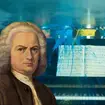Bach - Brandenburg Concertos
J. S. Bach composed this famous collection of six concertos (BWV 1046-51) between 1708-1721, although they weren't known as the 'Brandenburg' Concertos until 150 years later.
For a gateway into the world of Baroque music you can do no better than Bach’s 'Brandenburg' Concertos. Written between 1708-1721 for Christian Ludwig, Margrave of Brandenburg, they are based on the Italian concerto grosso style. Bach composed them when he was Kapellmeister (music director) in the small town of Cöthen, presumably for various members of the Cöthen Court Orchestra, the composer gave them the unofficial title of ‘Six concertos for several instruments’.
The concerto grosso form was pioneered by Italian composers like Archangelo Corelli, but Bach’s Brandenburgs took the form to new heights. They changed music by demonstrating the potential of an already-established form. Bach gave each instrumental family solo opportunities and created unusual combinations, like inclusion of violas and violas da gamba in No. 6 (which is also notable for its absence of violins), the exciting use of the harpsichord in No. 5, and the virtuosic violin lines in No. 4. Each of the six concertos appeals most to different listeners, from the galumphing first, the more stately second, the homely third, the lofty fourth and the galloping fifth right through to the joyous sixth.
They form a sort of musical job application; Bach packaged them up for the Margrave in the hope that he might secure some form of employment. Sadly for Bach, there appears to be no record of him ever having received a reply from the Margrave, and no evidence the Margrave himself even heard them played. In a sense it's lucky Bach was unfortunate in his employment - perhaps if he'd been employed by the Margrave, he would not have become Cantor of the Thomasschule at Thomaskirche in Leipzig just two years later in 1723. While in Cöthen, he also wrote his Six Suites for Unaccompanied Cello and the Sonatas and Partitas for solo violin.


























